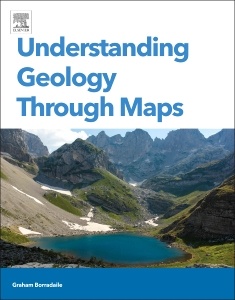Description
Understanding Geology Through Maps
Author: Borradaile Graham
Language: English
Subject for Understanding Geology Through Maps:
196 p. · 20.9x27.7 cm · Hardback
Description
/li>Contents
/li>Readership
/li>Biography
/li>Comment
/li>
Understanding Geology through Maps guides young professional geologists and students alike in understanding and interpreting the world?s dynamic and varying geological landscapes through the liberal use of visual aids including figures, maps, and diagrams.
This highly visual reference introduces the skills of interpreting a geological map and relating it to the morphology of the most important types of geological structure. Thoroughly revised, and with more international examples, it is ideal for use by students with a minimum of tutorial supervision.
Maps of geological structures provide all of the realism of a survey map without the huge amount of data often present, so readers can develop or hone their skills without becoming overwhelmed or confused. In particular, emphasis is placed throughout on developing the skill of three-dimensional visualization so important to geologists.
1. Understanding geology through maps: Introduction2. Relative ages3. Absolute ages4. Age relationships from map view5. Layered (stratified) rocks and topography6. Strata and plane-dipping features7. Dips, thicknesses, structure contours and maps8. Unconformities9. Faults10. Folds
The primary audience includes geologists (junior and seasoned professionals) and cartographers.
A secondary audience includes students at the graduate level taking related coursework in geology and cartography.
- Authored by a master geologist with more than 40 years of experience in research and instruction
- Features more than 130 figures, diagrams, and illustrations—many in full color—to highlight major themes and aid in the retention of key concepts
- Leads to a broad understanding of Earth’s geology through the use of real and theoretical map
- Exercises conclude each chapter, making it an ideal tool for self-guided and quick study

